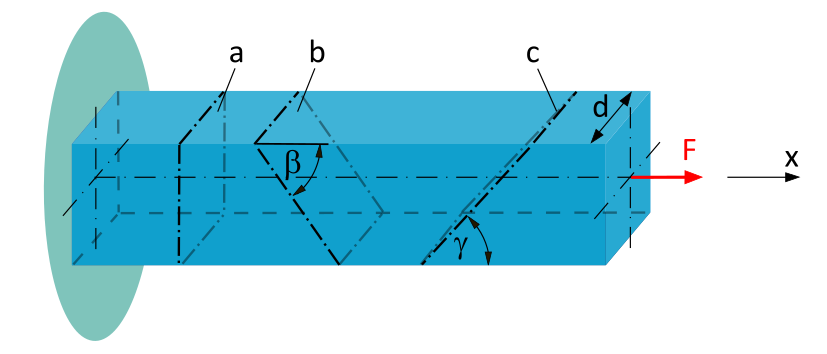Step 1: Determining the Cross-Sectional Area \(A^*\) as a Function of the Cutting Angle \(\varphi\)
Today, we're going to explore the cross-sectional area \(A^*\), but not just any area, the area as a function of the cutting angle \(\varphi\). Sounds complicated? It's not, I promise!
First, let's sketch two cross-sections: a perpendicular one and an arbitrary, oblique one.

\(A\) and \(A^*\) look like rectangles, and we can calculate their areas with the formulas:
But wait! The oblique area \(A^*\) depends on the angle \(\varphi\). The more oblique the cut, the larger or smaller the area becomes.
Easy peasy with a triangle!

The height of the triangle is \(h\) (the length of the perpendicular cross-section), the hypotenuse is \(s\) (the length of the oblique cross-section), and the angle \(\varphi\) is, well... the cutting angle \(\varphi\).
Using trigonometry (yes, I know, math) we can calculate \(s\) as a function of \(\varphi\):
This allows us to express \(s\) as:
Don't worry, it's just the cosine! It tells us the length of the hypotenuse (\(s\)) relative to the adjacent side (\(h\)).
The cross-sectional area \(A^*\) as a function of \(\varphi\):
- \(A^*\) gets larger when you cut more obliquely (larger \(\varphi\) \(\Rightarrow\) smaller \(\cos\varphi)\)).
- \(A^*\) gets smaller when you cut more perpendicularly (smaller \(\varphi\) \(\Rightarrow\) larger \(\cos(\varphi)\)).
If we combine the product \(h \cdot b = A\), we can express \(A^*\) as:
(7)

Normal and Shear Stress at an Arbitrary Section Angle
A clamped beam with a square cross-section (side length \(d=20~\mathrm{mm}\)) is subjected to a tensile force \(F=10~\mathrm{kN}\) along the beam axis.
Determine the average normal stress and the average shear stress...
- ...acting in cross-sectional plane a.
- ...acting in cross-sectional plane b (\(\beta = 50°\)).
- ...acting in cross-sectional plane c (\(\gamma = 40°\)).